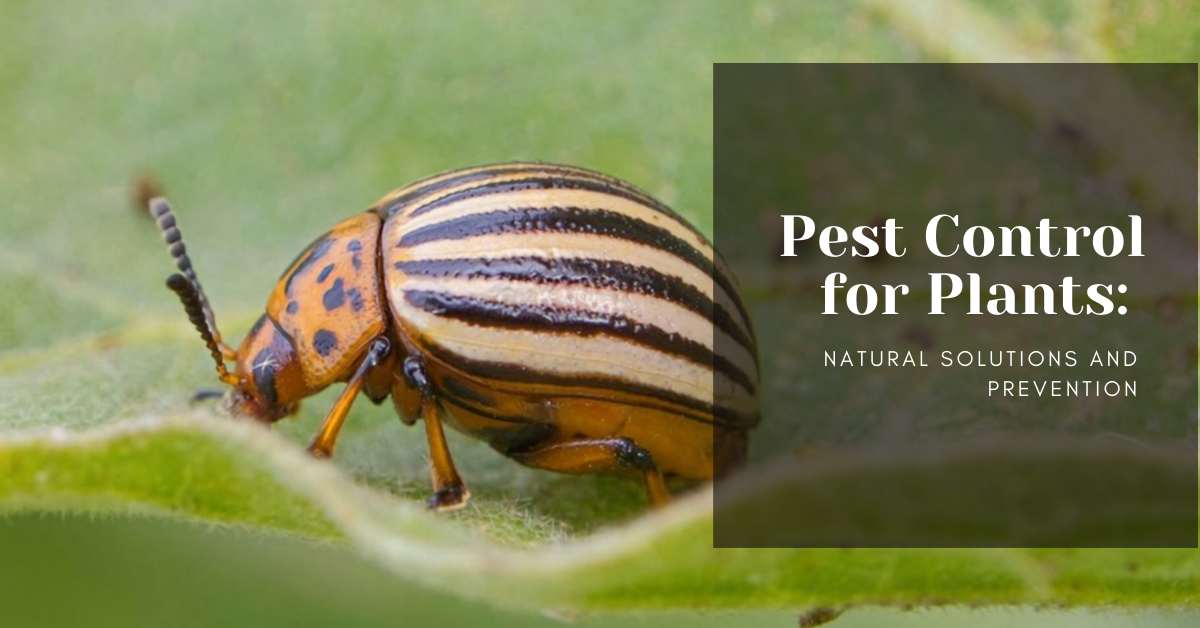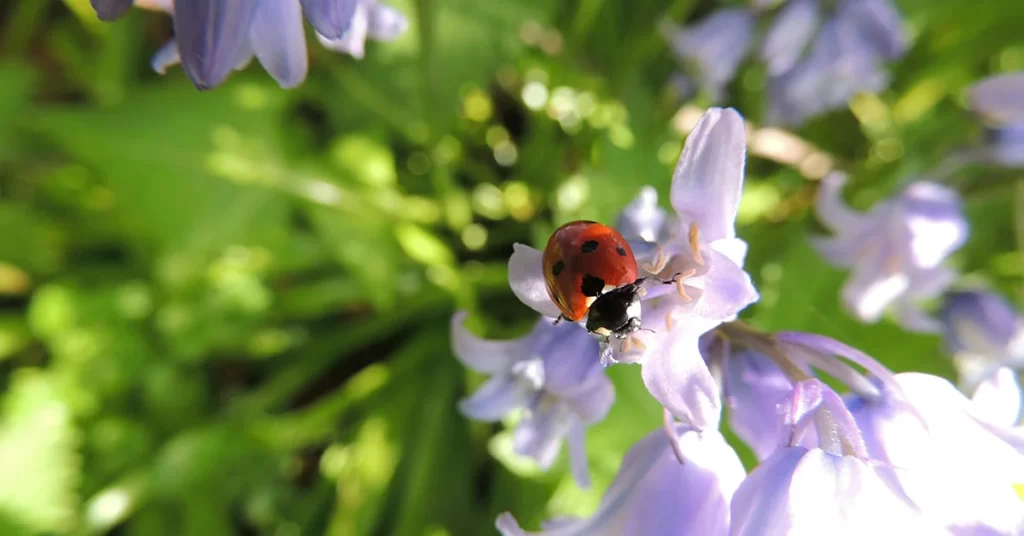
Design your dream garden today!
Get in touch with our expert garden designers for a quote.
Find out more

There will always be challenges when maintaining a healthy garden, one of which is pests. So, if you want to create a garden that will improve the aesthetics of your home, you need effective pest management strategies. Generally, your options will include chemical pesticides, but it’s always better to choose natural solutions for pest control for plants since they are safer and more sustainable in the long run. Find out more about these natural pest control solutions below.
Neem Oil
Probably one of the most powerful, natural solutions for pest control in plants is neem oil. It is made from the seeds of Azadirachta indica, commonly known as neem tree. When it comes to organic gardening, this organic insecticide is highly valued due to its broad-spectrum efficacy against numerous pests. Neem oil disrupts the life cycle of insects by preventing them from feeding, growing, or laying eggs. Some of the insects neem oil is particularly useful for include aphids, mites, whiteflies, and caterpillars.
It’s easy to get started with neem oil for your garden. Simply mix it with water and a small amount of mild liquid soap, which will act as the emulsifier. The ratio is around one tablespoon of neem oil to one quart of water, plus a few drops of soap. Make sure to shake the mixture well and spray it generously on pest-infested plants; ensure it covers both the upper and lower surfaces of leaves.
Neem oil has many benefits, but one of its best features is that it is safe for beneficial insects such as bees, ladybugs, and butterflies since it doesn’t leave any harmful residues. Plus, neem oil breaks down quickly and can help manage fungal diseases, making it a very versatile and environmentally friendly option as pest control for plants in your garden.
Companion Planting
Companion planting has long been an effective gardening technique that also serves as a natural pest control for plants. It involves planting different species of plants next to each other in strategic positions that will result in enhanced growth, improved soil health, and fewer chances of pests. Basically, companion planting is a method that creates a balanced ecosystem that will repel harmful pests, but encourages beneficial insects.
For example, if you have in your garden flowers like roses or petunias, then you might consider placing them near marigolds, a natural pest control for plants as they are effective in repelling nematodes and aphids. Or, you may also use lavender since it helps in repelling mosquitoes, flies, and other unwanted pests.
For your vines or ground covers such as creeping boobialla, pair them with nasturtiums. These act as a trap crop that attracts aphids and other pests away from the main plants. As you can see, other than repelling pests, companion planting can also confuse pests, making it harder for them to find and infest the right hosts.
Compared to chemical pesticides, companion planting is a more sustainable approach to pest control for plants. It may need more research and strategy to find the right plants to be planted near each both for benefits and aesthetics, but it is a long-term solution that encourages a thriving garden ecosystem.
Beneficial Insects

There are pests and there are beneficial insects, and it’s your job to identify one against the other for the benefit of your garden.
So, what are beneficial insects? These are the natural predators that help control the pest population in your garden. One example is ladybugs whose favourite are aphids, a common pest. Lacewings, also known as “aphid lions”, are also helpful when it comes to reducing aphid numbers and protecting your plants from damage.
If you want to keep your plants safe from caterpillars, beetles, and others, then you can count on predatory wasps. They lay their eggs on or inside pest insects and the larvae feed on the hosts, a strange but effective way of controlling pest population.
But, how do you encourage beneficial insects into your ecosystem? As mentioned in the previous section, it’s all about choosing the right plants. Find plants that provide nectar, such as heliconia, to attract these natural predators, and effectively create a habitat that will enhance the overall resilience of your garden against pests.
Diatomaceous Earth
If you want to steer clear of chemical pesticides, then you might consider diatomaceous earth – a mechanical insecticide.
This powder is a natural pest control for plants made from the fossilised remains of diatoms, a type of algae. Pests that come into contact with diatomaceous earth will be immediately pierced by its microscopic sharp edges, causing dehydration and eventual death. You may use it for crawling insects, including slugs, snails, ants, and various beetles.
It’s very easy to use diatomaceous earth for pest control for plants. Simply sprinkle a fine layer around the base of your plants or directly on the pests. Make sure to apply during dry conditions since moisture reduces its effectiveness. So, remember to reapply after watering or rainfall.
The most significant benefit of diatomaceous earth is it’s not toxic to humans, pets, and beneficial insects (when used appropriately). This makes diatomaceous earth a great eco-friendly option for gardeners looking for an efficient and safe pest control method for a healthier garden.
Garlic Spray
The last highly effective and eco-friendly option for pest control for plants is garlic spray. Garlic has long been used for centuries due to its potent insect-repelling properties. It is simple and powerful in keeping your garden free from common pests.
Make your homemade garlic spray by blending several cloves of garlic with water until you have a smooth mixture. Let it sit overnight to enhance its potency, then strain the mixture in the morning to remove any solid particles. Mix in a few drops of dish soap so the solution will stick to plant leaves better.
When you apply the garlic spray to your plants, focus on the underside of leaves where pests usually hide. This mixture emits a strong odour that pests find unappealing, thus acting as an effective natural repellent. Like the previous pest control methods in this blog, garlic spray is also safe for beneficial insects and pollinators.
Additional Tips and Tricks for Pest Control for Plants
To create a thriving garden at home, you’ll need to pair your chosen pest control methods with a few other practices. We’ve listed a few helpful tips and tricks below:
- Sanitation Practices – Regularly remove plant debris and fallen leaves to prevent pests from finding breeding grounds. Additionally, remember to always clean garden tools after use to avoid transferring pests and diseases between plants.
- Proper Watering Techniques – Avoid overwatering since excessively moist soil will attract pests and result in root rot. You’ll need to have a clear watering schedule; it’s best to water plants early in the morning to allow foliage to dry during the day which reduces the likelihood of fungal infections.
- Mulching – Organic mulch is helpful in retaining moisture, suppressing weeds, and creating a barrier against soil-dwelling pests.
- Row Covers – Lightweight row covers help protect plants from pests and allow light, air, and moisture to reach them at the same time. Just ensure to secure the edges to prevent pests from entering below.
- Fertilisation – As always, avoid over-fertilising since lush, tender growth can attract pests. Try to avoid chemical fertilisers as much as possible, focusing more on organic options instead to promote healthy and resilient growth.
Feel free to incorporate these additional strategies into your pest control routine paired with any of the top five options we’ve shared previously. With these helpful practices and methods, we’re sure you’ll create a balanced and healthy ecosystem that results in a blooming garden.
Neem oil, companion planting, beneficial insects, diatomaceous earth, and garlic spray are just some of the natural solutions for pest control for plants. These methods not only protect your plants but also promote a balanced ecosystem that benefits your whole garden. Pair them with proper gardening practices to further enhance the resilience of your plants against pests!
Will you give these solutions a try in managing pests in your garden at home? Let us know in the comments and share the results! For more gardening advice, check out Local Botanist blogs for a selection of expert tips for creating thriving greenery at home.

Transform Your Garden
Dreams into Reality!



